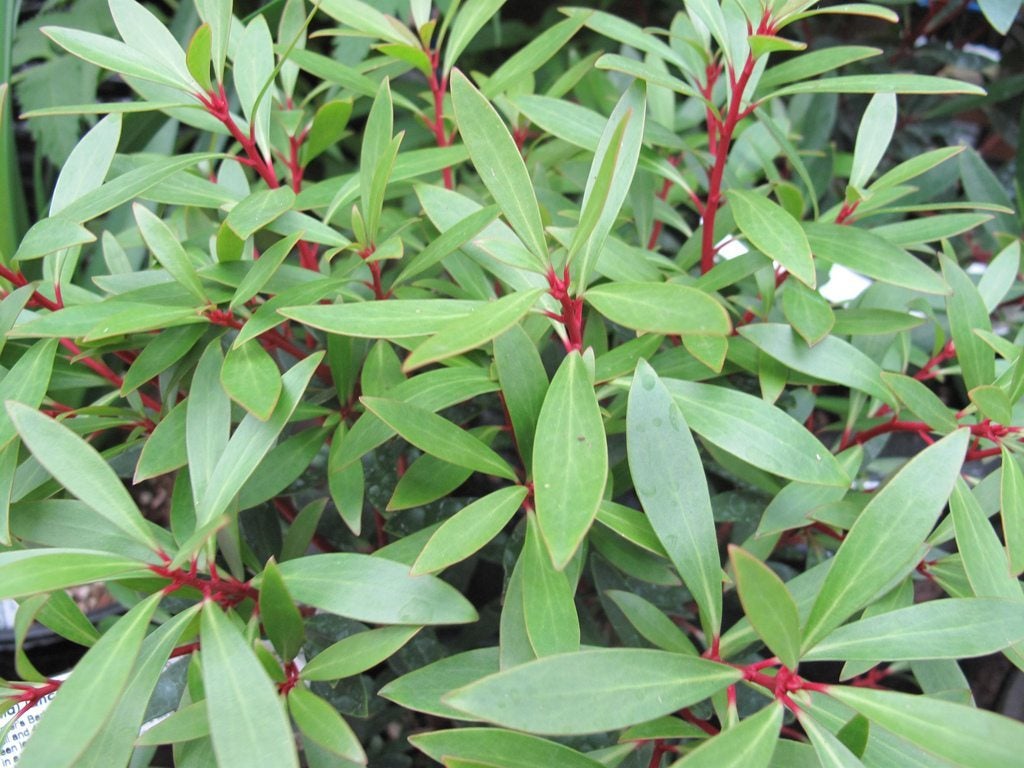What Is Drimys Aromatica: How To Grow A Mountain Pepper Plant


What is Drimys aromatica (syn. Tasmannia lanceolata)? Also called mountain pepper, it's a dense, shrubby evergreen marked by leathery, cinnamon-scented leaves and reddish-purple stems. Mountain pepper is named for the pungent, hot-tasting essential oils in the leaves. Clusters of small, sweet-smelling, creamy white or pale yellow blooms appear in late winter and early spring, followed by shiny, dark red fruit that turns black when ripe. If this mountain pepper info has piqued your interest, read on to learn how to grow a mountain pepper in your garden.
Mountain Pepper Info
Native to Tasmania, mountain pepper (Drimys aromatica) is a sturdy, mostly trouble-free plant that grows in the relatively mild climates of USDA plant hardiness zones 7 through 10. Birds are highly attracted to the plant’s pungent berries. Mountain pepper reaches heights of 13 feet (4 m.) at maturity, with a width of about 8 feet (2.5 m.). It works well as a hedge plant or privacy screen, or holds its own as a focal point in the garden.
Growing Drimys Mountain Peppers
The easiest way to grow mountain pepper is to purchase male and female plants at a garden center or nursery. Otherwise, plant mountain pepper seeds in the garden as soon as they ripen, as the seeds don’t store well and germinate best when fresh. You can also take cuttings from a mature mountain pepper shrub in summer. The plant is relatively easy to root, but be patient; rooting can take as long as 12 months. Plant mountain peppers in moist, rich, well-drained soil with a neutral to acidic pH. Although mountain peppers tolerate full sunlight, they prefer partial shade, especially where afternoons are hot. Note: Both male and female trees must be present in close proximity for fruiting to occur.
Mountain Pepper Care
Water deeply during the first few months to establish a deep root system, but allow the soil to dry slightly between watering to prevent root rot. Once planted, water regularly, especially during periods of extreme heat. Mountain pepper is somewhat drought-tolerant once established. Prune mountain pepper lightly in spring to maintain the shrub’s natural form.
Sign up for the Gardening Know How newsletter today and receive a free copy of our e-book "How to Grow Delicious Tomatoes".

A Credentialed Garden Writer, Mary H. Dyer was with Gardening Know How in the very beginning, publishing articles as early as 2007.